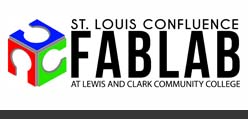Welding is the most common way of permanently joining metal parts. Briefly, heat is applied to metal pieces, melting and fusing them to form a permanent bond.
Because of its strength, welding is used in shipbuilding, automobile manufacturing and repair, aerospace applications and thousands of other manufacturing activities. Welding also is used to join beams when constructing buildings, bridges, and other structures, and to join pipes in pipelines, power plants and refineries.
Welding is a requisite skill in today's building boom. Put quite simply, to learn the principles of welding is to advance in the field.
Traditional or Competency-Based Education Classes Offerings
We offer our classes in both a traditional class setting meaning you will have a scheduled meeting day and time for each class like the traditional classes that you are used to. We also offer classes utilizing the Competency-Based Education method. What does that mean, you may ask? Competency-based education (CBE) awards academic credit based on mastery of clearly defined competencies (skills). With CBE, students take as much or as little time as they need to comprehend the material and master the skills. Competency-based programs can recognize prior learning regardless of where, when, or how that learning took place. Education often takes the form of facilitation and guidance for learners to progress through the material until they demonstrate mastery of the competencies (skills). In this way, students proceed when they have shown mastery of the skill. In other words, work at your own pace as your schedule allows.
Offerings
- Welding Technology | AAS degree
- Welding Technology | Certificate of Proficiency
- Production/Fabrication Welding | Certificate of Proficiency
- Basic Welding | Certificate of Completion
- General Welding | Certificate of Completion
- Gas Tungsten Arc & Pipe Welding | Certificate of Completion
- Shielded Metal Arc Welding | Certificate of Completion
- Structural Welding | Certificate of Completion
- Testing & Inspection in Welding | Certificate of Completion
- TIG Welding | Certificate of Completion
- Wire-Feed Welding | Certificate of Completion
See the catalog for the course and degree information
*This is only meant as a guide. Please see an advisor when planning your courses.

